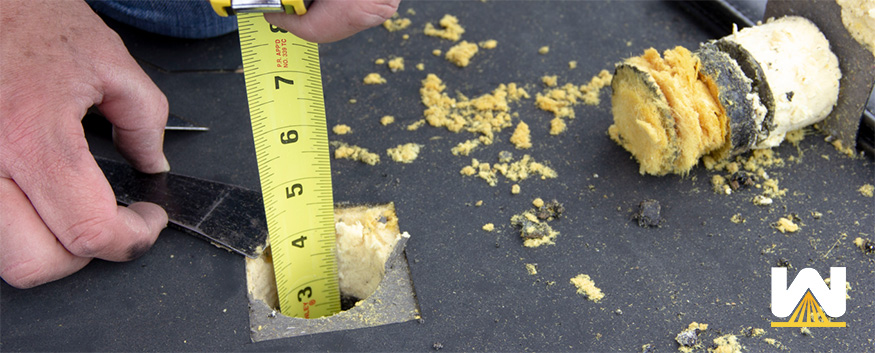If you’re facing roofing issues with your commercial property, it’s imperative to get a professional assessment to understand the extent of the problem and find the best solution. Here’s everything you need to know about commercial roof inspections so you can make an informed decision before hiring a roofing contractor.
Cost: It’s Free
Commercial roof inspections are usually free. You can have a professional evaluate your roof’s condition without any upfront cost.
Time: Quick and Efficient
For a standard 4,000 square foot roof, a thorough inspection should take about 30 minutes. This quick process ensures that you get the information you need without significant disruptions to your business operations.
For a larger roof, say 100,000 square feet, an inspection will likely take a few hours. This depends on the severity of the roofing issues.
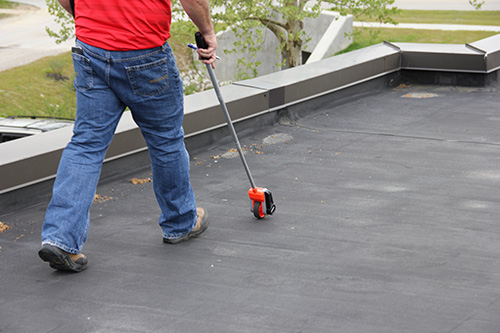
What’s Included in a Commercial Roof Inspection?
Membrane Inspection
The inspector will examine the roof membrane to assess its remaining life and current condition. They’ll look for signs of wear and tear, such as cracks, blisters, or punctures. They will inspect the seams for adhesion strength. Seams are one of the main causes of a leaking roof.
Core Sample
A core sample of the roof will be taken to assess the layers beneath the surface. This sample is then properly sealed when the inspection is complete to prevent any damage or leaks.
The core samples main objective is to show how many roofing systems are installed, if there’s presence of wet roofing or insulation, and what the deck is composed of and it’s condition.
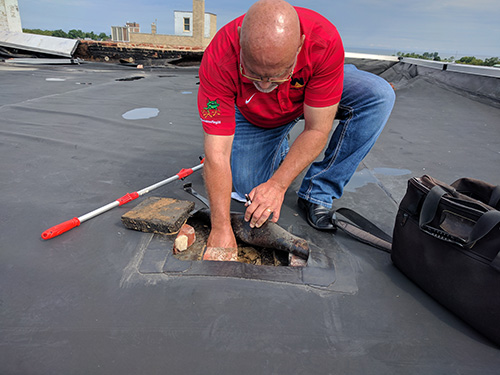
Square Footage Measurement
Accurate measurements of the roof’s square footage are taken. This is essential for providing precise cost estimates and planning any necessary work.
Indoor Inspection
Inspectors will check indoor ceiling tiles or the underside of the roof for signs of water damage. This helps identify leaks that might not be visible from the roof and ensures that any underlying issues are addressed.
Penetrations, Vertical Walls, and Flashings
All penetrations, vertical walls, and flashings are inspected for damage or potential water entry points. These areas are common sources of leaks.
HVAC Curbs
If your HVAC units are installed too close to the roof surface, curbs may be needed to elevate them. This prevents water from pooling around the units and provides the proper slope for water to run off the roof.
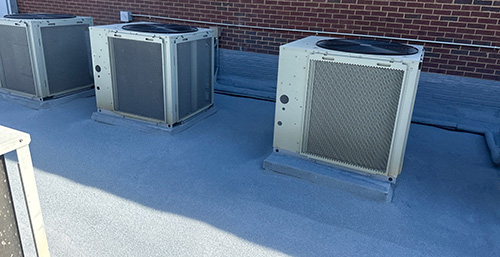
Additional Ventilation
Inspectors will assess the need for extra vents to improve roof ventilation. Proper ventilation is key to preventing moisture buildup and extending the life of your roof.
Removal of unwanted rooftop materials
Part of the inspection is the possible removal of unwanted rooftop materials such as skylights or HVAC units.
Skylights may be dirty and are no longer bringing in any natural light. They can also cause be a safety issue.
Sometimes when the roof is worked on, it’s a great time to remove unwanted skylights, board the area up, and make sure it’s ok to walk on once the roofing project is complete.
HVAC units that are old, inefficient, or are no longer working can be removed or replaced as well.
Proper slope
High and low areas, drains, and the overall landscape of the roof will be inspected. Will water run off the roof like it’s supposed to per industry standards? Or have areas sagged, plantation has grown, or has anything else happened that has negatively affected the slope.
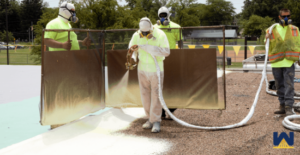
Post-Inspection Discussion
After the inspection, a quick discussion with the building’s representative will take place. The inspector will explain the findings, such as why the roof is leaking or why water isn’t running off the roof properly.
The inspector will recommend the best repair, restore, or replacement option at this time and provide a general scope of work.
Great detail of the scope of work will come in the quote.
Getting a Quote
You should receive a detailed quote within a few business days after the inspection. This quote can include photos, videos, core samples of the existing roof, references, credentials, costs, warranty options, and visuals of what the roofing system should look like when the work is complete.
This comprehensive documentation helps you make informed decisions about necessary repairs or replacements.
Tips for Business Owners
Backlog
When selecting a contractor for your roofing needs, be cautious of those with no backlog or who can start immediately. A backlog often indicates that the contractor is in demand and likely performs good, honest work.
Bonus Tip: Check out the company’s Google My Business profile. People usually comment when negative things happen. If a company has plenty of unsatisfied customers, you’ll likely see their comments there.
Warranty Options and Length
Be wary of short warranties such as 1-2 years. These are huge red flags. Reputable contractors issue warranty lengths up to 20+ years.
Another thing to think about is manufacturer warranties. Can the roofing contractor offer them? The top roofing material manufacturers don’t sell their materials to just anyone. The contractors need to be properly trained before applying their products.

